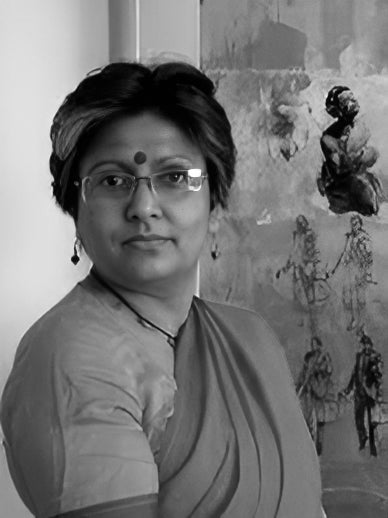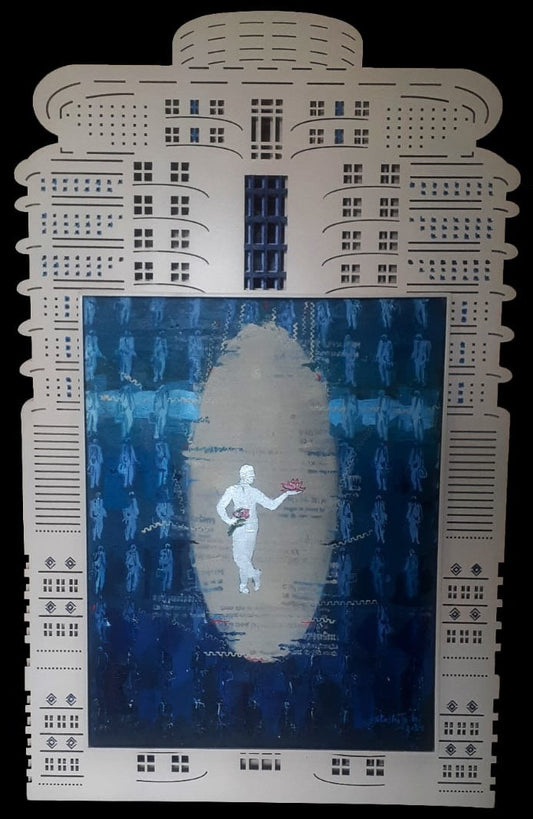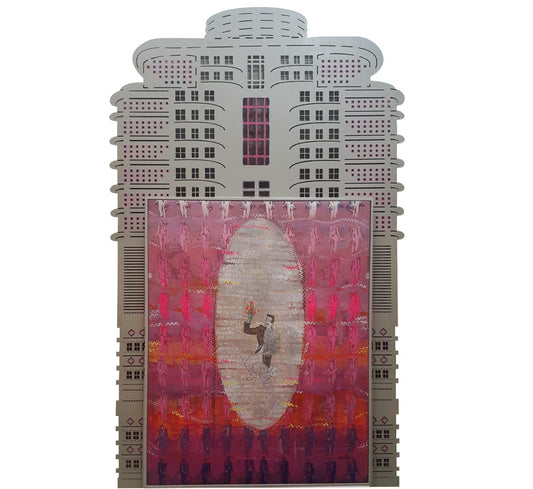
NITASHA JAINI
Nitasha’s work confronts structures of power, identity, and perception with a visual language that is both analytical and quietly unrelenting. Her sustained focus on the urban male figure forms the core of her practice, a site through which she examines masculinity not as fixed, but as performed, fractured, and historically coded. These figures are rendered with precision, yet resist glorification; their presence carries traces of vulnerability, burdened with the weight of materialism and shifting social expectation.
Raised in Amritsar in an environment shaped by intellectual inquiry and discipline, Nitasha’s early engagement with ideas around gender and empowerment shaped her trajectory as an artist. The influence of her mother, an educationist, and her father, an Army officer, fostered a nuanced awareness of authority and gender roles. This perspective would later translate into a practice that probes the psychological terrain of contemporary masculinity.
After completing a Master’s degree in Fine Arts, Nitasha refined her conceptual framework under the mentorship of Rameshwar Broota. His impact can be seen not in style alone but in the clarity of her thematic focus and her refusal to approach figuration as merely representational. Instead, she situates the male body within larger social and ideological systems, often exploring the tension between the spiritual and the material, a duality that surfaced prominently in her 2003 exhibition Nayansukh.
Nitasha’s practice gained early international attention with a solo show at the Indian Cultural Centre in Berlin in 2000. Since then, her work has taken on increasingly experimental and spatial forms, often installation-based, allowing her to navigate questions of gaze, containment, and audience engagement. Her participation in the Jaipur Art Summit and other group exhibitions in Gurugram further demonstrates her commitment to engaging public discourse on gender and identity in contemporary India.
Working from her studio in Gurugram, Nitasha continues to create environments that interrogate the visual economy of power and the constructed nature of identity. Her work offers no easy resolutions but instead asks viewers to confront the contradictions within cultural narratives around masculinity, beauty, and control. Through careful observation and conceptual clarity, she builds a body of work that is at once personal and political, anchored in Indian contemporary realities, yet open to broader global conversations.


